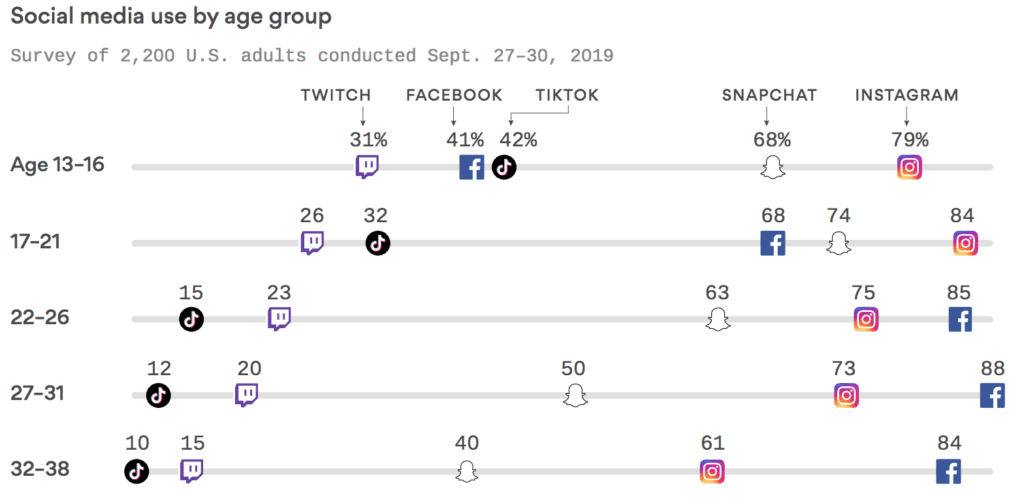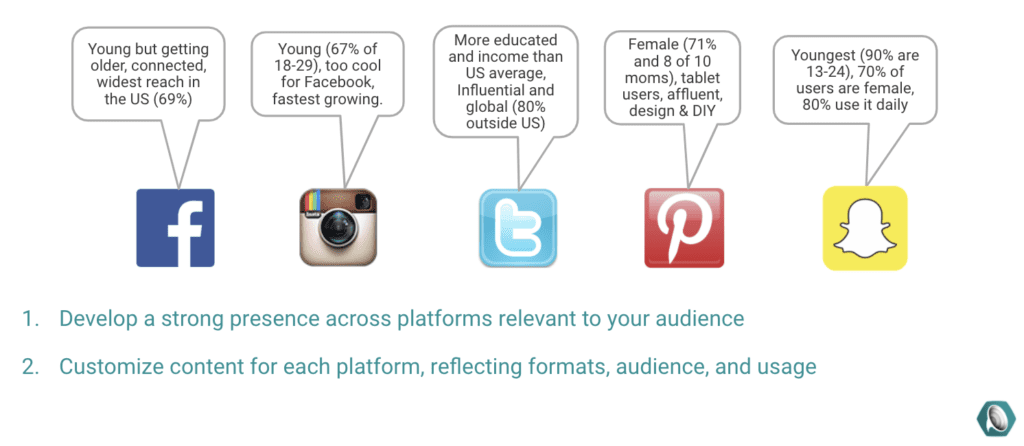As entrepreneurs, marketers, and enthusiasts, we understand the pivotal role that social media platforms play in the modern business landscape. Each platform is constantly evolving and adding new tools to facilitate community engagement. In the current digital marketing landscape, building your organic, or “owned”, presence is vital to success. You know you have to be present on a variety of social channels but if you’re here, you’re likely asking yourself, what is the best social media platform for my business?
With so many options out there – Facebook, Instagram, Twitter, Pinterest, TikTok, Reddit, and Snapchat, what platform should you use? Which is the best social media for your business? How can you maximize the return on your marketing dollar?
In this article, I’ll take you through some important factors in making that decision for your business, as well as the nuances of interacting with your audience on each platform.
Contrary to what some may claim, there’s no magic switch to flip which suddenly results in thousands of genuine followers. Followers can be bought or lured with promotions, but they will eventually unfollow, or remain unengaged. A relevant, engaged audience must be cultivated over time in an interactive, authentic way.
Like anything worthwhile, building and maintaining a strong social media presence takes time. It’s important to set these expectations with your colleagues early on, or you risk getting caught in the trap of chasing likes, follower count, and other vanity metrics that don’t reflect the true potential value of a social media following. Let’s face it, you have limited resources, so be sure to focus them on the most relevant social media channels for your business.
Where is Your Audience?
The target market of your business is the most important factor in determining which social networks you should adopt and manage. What platform(s) are they using most? Start by focusing the majority of your time here. What are they using the platform for? Make sure to speak to these interests. What kind of content are they resonating with? Develop content that reflects these preferences.
Each social media channel has its own identity and ecosystem. This identity is formed by the user demographic, what that demographic is interested in, and what challenges are facing them. TikTok, for example, is quickly becoming the new gathering place for younger demographics. 18-24 year olds account for 42% of the 30 million monthly active users in the United States with 13-17 year olds at 27%.

Luckily, you don’t have to spend too much time searching for the right channels as there are only a handful of relevant social media platforms for businesses. You can zero in on your ideal customer’s social network preference by understanding the audiences each platform caters to.
Pew Research Center recently provided deeper insight into who exactly is utilizing the major networks. It’s well worth a read if you have the time. The Foghorn Labs team boiled down the key findings into the infographic below. Where does your customer fit?

We excluded YouTube because despite being the world’s second largest search engine, it serves as more of a content distribution mechanism and advertising platform than a true social media community.
The Nuances of Different Platforms
Now that we’ve discussed choosing the right social media platform for your business, it’s important to understand some key factors that make each major platform unique so that you can customize your content and approach accordingly.
We as individuals pick up on different social cues based on context and our own unique life experience. Social networks are in many ways the same.
Some businesses make the mistake of treating all social media platforms as equal distribution channels without tailoring content for each one. The major platforms make this particularly easy with direct sharing; For example, Instagram has a convenient switch allowing you to share directly to Facebook and Twitter. Though direct sharing saves time (something we could all use more of), it can be a trap. Even when bandwidth is limited, it’s more effective to create unique content for each platform than it is to copy and paste. If this is not realistic due to resource constraints, the next best option is to modify your overall message to better fit each platform. Why? Doing so will increase brand engagement, facilitate authentic customer interaction, and encourage user base to follow your different channels.
As Gary Vaynerchuk, a well known social media expert writes in his book Jab, Jab, Jab, Right Hook, “Today, getting people to hear your story on social media, and then act on it, requires using a platform’s native language, paying attention to context, understanding the nuances and subtle differences that make each platform unique, and adapting your content to match.”
In the same vein, harnessing trending topics on twitter with the use of #hashtags exposes your message and brand to a wide audience who will be checking in moment to moment. Whereas videos (especially ones designed to draw attention) do well on Facebook. Now that users can follow hashtags as they would a friend, across channels, the trick will be to select which hashtags represent your brand the most and remain consistent. This will allow you to be seen as a regular on hashtag feeds.
Other posting considerations revolve around supporting your paid efforts. Is your message on organic social consistent with the ads you are paying for? Organic posts are an effective tool for supporting paid campaigns. Consider incorporating a soft sales pitch into every 3rd or 4th Organic post.
It is important to first decide what platforms you want to use before putting the time, effort and financial resources to make it a reality. After you make that decision, be sure to approach each platform uniquely to get the most out of it.
Drop us a line for a friendly chat to discuss your situation.






Share:
5 Pitfalls of Remarketing and How to Avoid Them
Programmatic Ad Campaigns are Only as Intelligent as the People Running Them (Part 1 of 3)